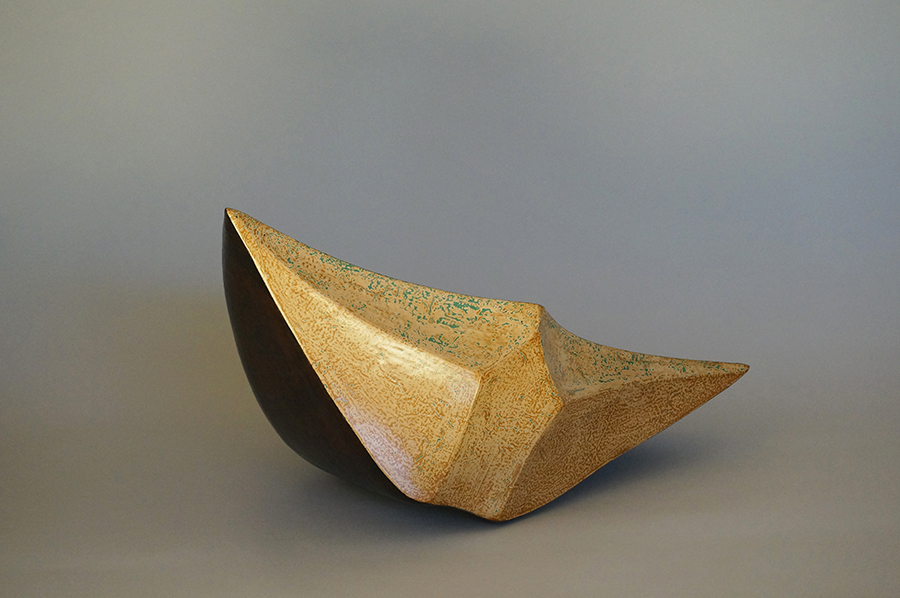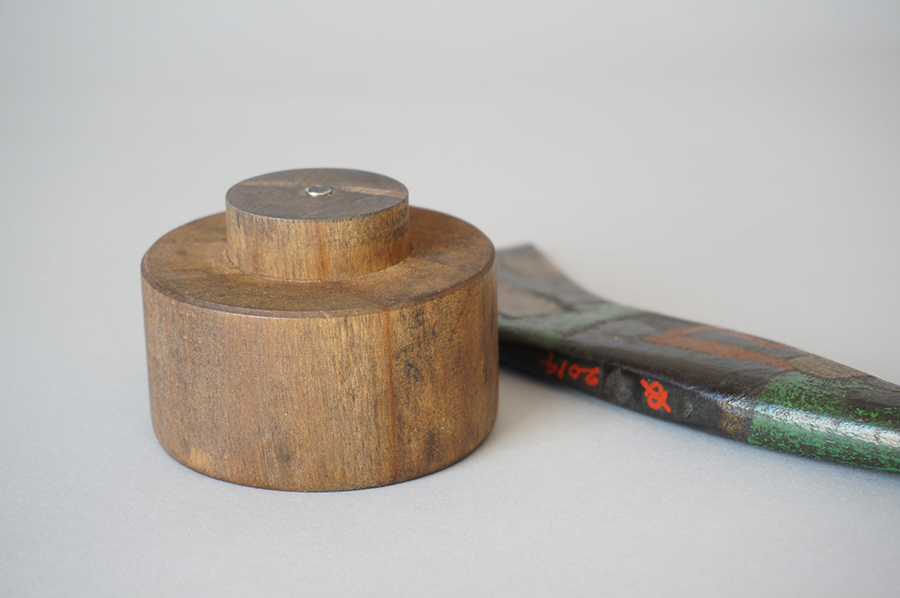Urushi: Rebirth

A Memory of the Ocean
2014
lacquer(Urushi), hemp cloth
H29 x W66 x D37cm





Wind Curtain
2014
lacquer(Urushi), hemp cloth
H40 x W44 x D12 cm





Chantey
2014
lacquer(Urushi), hemp cloth, wood(base)
H18 x W23 D7.5cm




Flying Form II
2014
lacquer(Urushi), wood(body and base)
H13 x W23 x D8 cm




Introduction by Keiko Fukai
Kurimoto Natsuki, who is a professor of Kyoto City University of Arts, has been a front runner in the contemporary Japanese lacquer movement. In his 20s, he astonished the public with his monumental lacquer sculpture and his use of color, especially in his daring costume series. His sensational debut opened our eyes to totally new possibilities in the use of lacquer.
Kurimoto Natsuki, who is a professor of Kyoto City University of Arts, has been a front runner in the contemporary Japanese lacquer movement. In his 20s, he astonished the public with his monumental lacquer sculpture and his use of color, especially in his daring costume series. His sensational debut opened our eyes to totally new possibilities in the use of lacquer.
When I was thirteen years old my father retired from his company at the age of 55. I thought that was unreasonable, and was determined to find a job that does not require retirement. After graduating from middle school, I asked my father if I could become a chef or a carpenter specializing in building temples or shrines. However, my father urged me to go to high school; so I followed his advice and became interested in art in my high school years..
When I entered Kyoto City University of Arts, ceramics and fiber arts were popular among students because those media were in the process of international transformation from traditional crafts to forms of art. However, lacquer was still bound by tradition, and seemed to me unglamorous even though it required extreme discipline and hard work by the students. But I thought there was enormous potential for the future of lacquer. Yet, it was very rare to find artists who were trying to modernize the use of the craft of lacquer. At the time I was very impressed by the work of artists such as Isamu Noguchi, Magdalene Abakanowics, and Cristo and Jeanne-Claude, and their work inspired me to do something new with lacquer. Also, the tedious production required by lacquer, such as the repetitive coating and sanding, reminded me of the comparable discipline of the carpenters that had interested me in earlier years. For all of these reasons I decided to take the course in lacquer.
Raw lacquer is collected from living lacquer trees. Because I respect the life of the lacquer trees, the primary concept of my art is the “Rebirth of Life.” In order to express this concept, I apply lacquer over various kinds of discarded materials, such as corrugated cardboard, automobile hoods, driftwood, fallen trees, dried gourds, etc.. These discarded, surplus materials can have another life when lacquer is applied to them.
Raw lacquer is collected from living lacquer trees. Because I respect the life of the lacquer trees, the primary concept of my art is the “Rebirth of Life.” In order to express this concept, I apply lacquer over various kinds of discarded materials, such as corrugated cardboard, automobile hoods, driftwood, fallen trees, dried gourds, etc.. These discarded, surplus materials can have another life when lacquer is applied to them.
